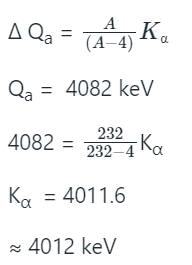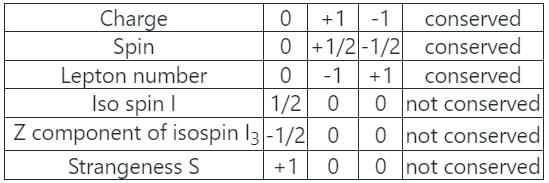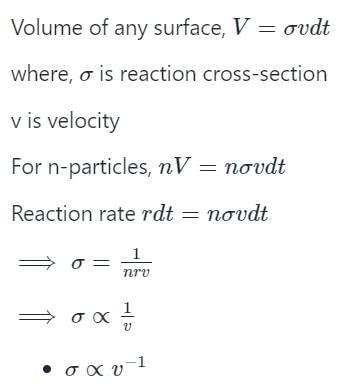All Exams >
EmSAT Achieve >
Physics for EmSAT Achieve >
All Questions
All questions of Elementary Particles for EmSAT Achieve Exam
The strong nuclear force between a neutron and a proton in a zero orbital angular momentum state is denoted by Fnp(r), where r is the separation between them. Similarly, Fnn (r) and Fpp (r) denote the forces between a pair of neutrons and protons, respectively, in zero orbital momentum state. Which of the following is true on average if the inter-nucleon distance is 0.2 fm < r < 2 fm?- a)Fnp is attractive for triplet spin state, and Fnn, Fpp are always repulsive
- b)Fnn and Fnp are always attractive and Fpp is repulsive in the triplet spin state
- c)Fpp and Fnp are always attractive and Fnn is always repulsive
- d)All three forces are always attractive
Correct answer is option 'B'. Can you explain this answer?
The strong nuclear force between a neutron and a proton in a zero orbital angular momentum state is denoted by Fnp(r), where r is the separation between them. Similarly, Fnn (r) and Fpp (r) denote the forces between a pair of neutrons and protons, respectively, in zero orbital momentum state. Which of the following is true on average if the inter-nucleon distance is 0.2 fm < r < 2 fm?
a)
Fnp is attractive for triplet spin state, and Fnn, Fpp are always repulsive
b)
Fnn and Fnp are always attractive and Fpp is repulsive in the triplet spin state
c)
Fpp and Fnp are always attractive and Fnn is always repulsive
d)
All three forces are always attractive

|
Arien Instructors answered |
- Inside the nucleus the interaction between neutron-neutron and neutron-proton is
- always attractive due to nuclear force whereas the force between proton-proton it is repulsive due
- to coulombic interaction.
Thus, Fnn and Fnp are always attractive and Fpp is repulsive
Hence the correct answer is option 2.
A neutral particle X° is produced in π- + p → X° + n by s-wave scattering. The branching ratios of the decay of X° to 2y, 3π and 2π are 0.38, 0.30 and less than 10-3, respectively. The quantum numbers JCP of X° are- a)0-+
- b)0+-
- c)1-+
- d)1+-
Correct answer is option 'B'. Can you explain this answer?
A neutral particle X° is produced in π- + p → X° + n by s-wave scattering. The branching ratios of the decay of X° to 2y, 3π and 2π are 0.38, 0.30 and less than 10-3, respectively. The quantum numbers JCP of X° are
a)
0-+
b)
0+-
c)
1-+
d)
1+-

|
Arien Instructors answered |
In particle physics, the quantum numbers J, C, and P refer to the total angular momentum quantum number, charge parity, and space parity of a particle, respectively. They are extensively used to classify particles and/or to understand their decay channels, and they are fundamentally dictated by the conservation laws and quantum mechanical principles.
- J (Total angular momentum): A particle decaying into two particles can be in the s-wave state, meaning that the relative angular momentum of the decay products is zero. Thus, the total angular momentum number (J) of the parent particle is equal to the total spin of the decay products. If the particle decays into two photons (2γ), these photons have spin 1 each so J should be an integer (conservation of angular momentum). However, the fact that the particle also decays into 3 pions implies that the angular momentum must be zero (because pions are spin-0 particles and the system is in an s-wave state). Therefore, J = 0.
- C (Charge parity): All given decay modes allow us to infer that the Charge conjugation must be positive. Therefore, C = +.
- P (Space parity): Because the decay to two pions (2π) is strongly suppressed (less than 10-3), this means that the parity (P) must be negative. The suppressing of the two-pion decay mode indicates that this mode is probably forbidden by conservation of parity. Therefore, P = -
So, the quantum numbers JCP for the particle X° are 0+-.
The Q - value of the α - decay of 232Th to the ground state of 228Ra is 4082 keV. The maximum possible kinetic energy of the α - particle is closest to- a)4082 keV
- b)4050 keV
- c)4035 keV
- d)4012 keV
Correct answer is option 'D'. Can you explain this answer?
The Q - value of the α - decay of 232Th to the ground state of 228Ra is 4082 keV. The maximum possible kinetic energy of the α - particle is closest to
a)
4082 keV
b)
4050 keV
c)
4035 keV
d)
4012 keV

|
Arien Instructors answered |

The correct answer is option (4).
Which of the following decay processes is allowed?- a)K0 → µ+ + µ-
- b)μ- → e- + γ
- c)n → p + π -
- d)n → π+ + π-
Correct answer is option 'A'. Can you explain this answer?
Which of the following decay processes is allowed?
a)
K0 → µ+ + µ-
b)
μ- → e- + γ
c)
n → p + π -
d)
n → π+ + π-

|
Arien Instructors answered |
→ For the first process K0 → µ+ + µ-

Thus, this is an allowed decay through the weak interaction. In weak interaction strangeness and
Iso spin is not conserved.
Hence the correct answer is option 1.

Thus, this is an allowed decay through the weak interaction. In weak interaction strangeness and
Iso spin is not conserved.
Hence the correct answer is option 1.
An alpha particle having energy 5 MeV entering into the proportional counter with capacity of 25 pf. The resultant pulse height will be close to:
(Ionisation Potential ~ 15 eV)- a)4.3 mV
- b)8.5 mV
- c)2.1 mV
- d)6.3 mV
Correct answer is option 'C'. Can you explain this answer?
An alpha particle having energy 5 MeV entering into the proportional counter with capacity of 25 pf. The resultant pulse height will be close to:
(Ionisation Potential ~ 15 eV)
(Ionisation Potential ~ 15 eV)
a)
4.3 mV
b)
8.5 mV
c)
2.1 mV
d)
6.3 mV

|
Arien Instructors answered |
Pulse height V = Ne/c
Substitute given values, we get,



So, the correct answer is Pulse height V' = 2.133mV
Substitute given values, we get,



So, the correct answer is Pulse height V' = 2.133mV
When  nucleus is bombarded with neutrons, radioactive
nucleus is bombarded with neutrons, radioactive  and certain particles are produced.
and certain particles are produced.- a)protons
- b)electrons
- c)neutrons
- d)α-particles
Correct answer is option 'A'. Can you explain this answer?
When  nucleus is bombarded with neutrons, radioactive
nucleus is bombarded with neutrons, radioactive  and certain particles are produced.
and certain particles are produced.
 nucleus is bombarded with neutrons, radioactive
nucleus is bombarded with neutrons, radioactive  and certain particles are produced.
and certain particles are produced.a)
protons
b)
electrons
c)
neutrons
d)
α-particles

|
Arien Instructors answered |


Hence, the correct answer is Option-1-protons.
Which of the following reactions is not allowed?- a)π+ + n → K++ ∑0
- b)A++ n → ∑0 + + p
- c)p° → π+ π-
- d)None of the above
Correct answer is option 'B'. Can you explain this answer?
Which of the following reactions is not allowed?
a)
π+ + n → K++ ∑0
b)
A++ n → ∑0 + + p
c)
p° → π+ π-
d)
None of the above

|
Arien Instructors answered |
- A++ n → ∑0 + + p
- Here, "A" represents an arbitrary nucleus with a charge of +2 (A++), "n" represents a neutron, "∑0" represents a neutral sigma particle, and "p" represents a proton.
- In particle physics and nuclear reactions, there are certain conservation laws that must be obeyed.
- Conservation of Charge: The total electric charge before a reaction should equal the total electric charge after the reaction.
- In this reaction, the initial state (A++ n) has a total electric charge of +2 (A++) for the nucleus and a charge of 0 for the neutron. Therefore, the total initial charge is +2. However, in the final state (∑0 + + p), the neutral sigma particle (∑0) has no charge, and the proton (p) has a charge of +1.
- This leads to a total electric charge in the final state of +1.
- Since the total electric charge is not conserved in this reaction (initial state: +2, final state: +1), it is not allowed according to the conservation of charge.
- So, the correct answer is indeed 2) A++ n → ∑0 + + p because it violates the conservation of charge.
- The total charge should remain the same before and after a reaction in accordance with the conservation laws of particle physics.
The tensor component of the nuclear force may be inferred from the fact that deuteron nucleus 
- a)has only one bound state with total spin S = 1
- b)has a non-zero electric quadrupole moment in its ground state
- c)is stable while triton
 is unstable
is unstable - d)is the only two nucleon bound state
Correct answer is option 'B'. Can you explain this answer?
The tensor component of the nuclear force may be inferred from the fact that deuteron nucleus 

a)
has only one bound state with total spin S = 1
b)
has a non-zero electric quadrupole moment in its ground state
c)
is stable while triton  is unstable
is unstable
 is unstable
is unstabled)
is the only two nucleon bound state

|
Arien Instructors answered |
- The deuteron, represented by the symbol
 is a stable isotope of hydrogen with one proton and one neutron, making it a unique and crucial example in nuclear physics.
is a stable isotope of hydrogen with one proton and one neutron, making it a unique and crucial example in nuclear physics. - The existence of the tensor force can be inferred from the properties of the deuteron. The deuteron is the only stable particle composed of two nucleons, and yet, it is not particularly tightly bound, reflecting the balance between the attractive strong force and the repulsive coulomb and centrifugal forces.
- In quantum mechanics, particles can have different types of spin states. In the case of a system of two nucleons, such as the deuteron, there can be a triplet state (where the spins of the two nucleons are aligned, giving a total spin of 1) and a singlet state (where they are anti-aligned, giving a total spin of 0).
- The fact that the deuteron exists in a triplet state (spin = 1), but a neutron-neutron or proton-proton spin-singlet bound state does not exist, strongly suggests the existence of a tensor component in the nuclear force.
- This is because the tensor force can couple to spin-1 states but not to spin-0 states. Without the tensor force, the deuteron would not be bound.
- A non-zero quadrupole moment in the ground state of the deuteron is only possible if there's a combination of both S and D states (where D state signifies a quantum mechanical state with an orbital angular momentum quantum number l = 2).
- The mixing of S and D states is a clear signature of the tensor component of the nuclear force. So the deuteron's non-zero electric quadrupole moment in its ground state works as indirect evidence for the tensor component of the nuclear force.
The total angular momentum j of the ground state of the  nucleus is
nucleus is- a)1/2
- b)1
- c)3/2
- d)5/2
Correct answer is option 'D'. Can you explain this answer?
The total angular momentum j of the ground state of the  nucleus is
nucleus is
 nucleus is
nucleus isa)
1/2
b)
1
c)
3/2
d)
5/2

|
Arien Instructors answered |
The total number of protons here is: z = 8 and the total number of neutrons is: N = 9.
Now, the total angular momentum depends upon the arrangement of the neutrons in the nucleus. The arrangement in the orbits is given below:

The last neutron is in the d-shell with a total angular momentum: 5/2
Now, the total angular momentum depends upon the arrangement of the neutrons in the nucleus. The arrangement in the orbits is given below:

The last neutron is in the d-shell with a total angular momentum: 5/2
Chapter doubts & questions for Elementary Particles - Physics for EmSAT Achieve 2025 is part of EmSAT Achieve exam preparation. The chapters have been prepared according to the EmSAT Achieve exam syllabus. The Chapter doubts & questions, notes, tests & MCQs are made for EmSAT Achieve 2025 Exam. Find important definitions, questions, notes, meanings, examples, exercises, MCQs and online tests here.
Chapter doubts & questions of Elementary Particles - Physics for EmSAT Achieve in English & Hindi are available as part of EmSAT Achieve exam.
Download more important topics, notes, lectures and mock test series for EmSAT Achieve Exam by signing up for free.
Physics for EmSAT Achieve
208 videos|329 docs|212 tests
|

Contact Support
Our team is online on weekdays between 10 AM - 7 PM
Typical reply within 3 hours
|
Free Exam Preparation
at your Fingertips!
Access Free Study Material - Test Series, Structured Courses, Free Videos & Study Notes and Prepare for Your Exam With Ease

 Join the 10M+ students on EduRev
Join the 10M+ students on EduRev
|

|
Create your account for free
OR
Forgot Password
OR
Signup to see your scores
go up within 7 days!
Access 1000+ FREE Docs, Videos and Tests
Takes less than 10 seconds to signup










